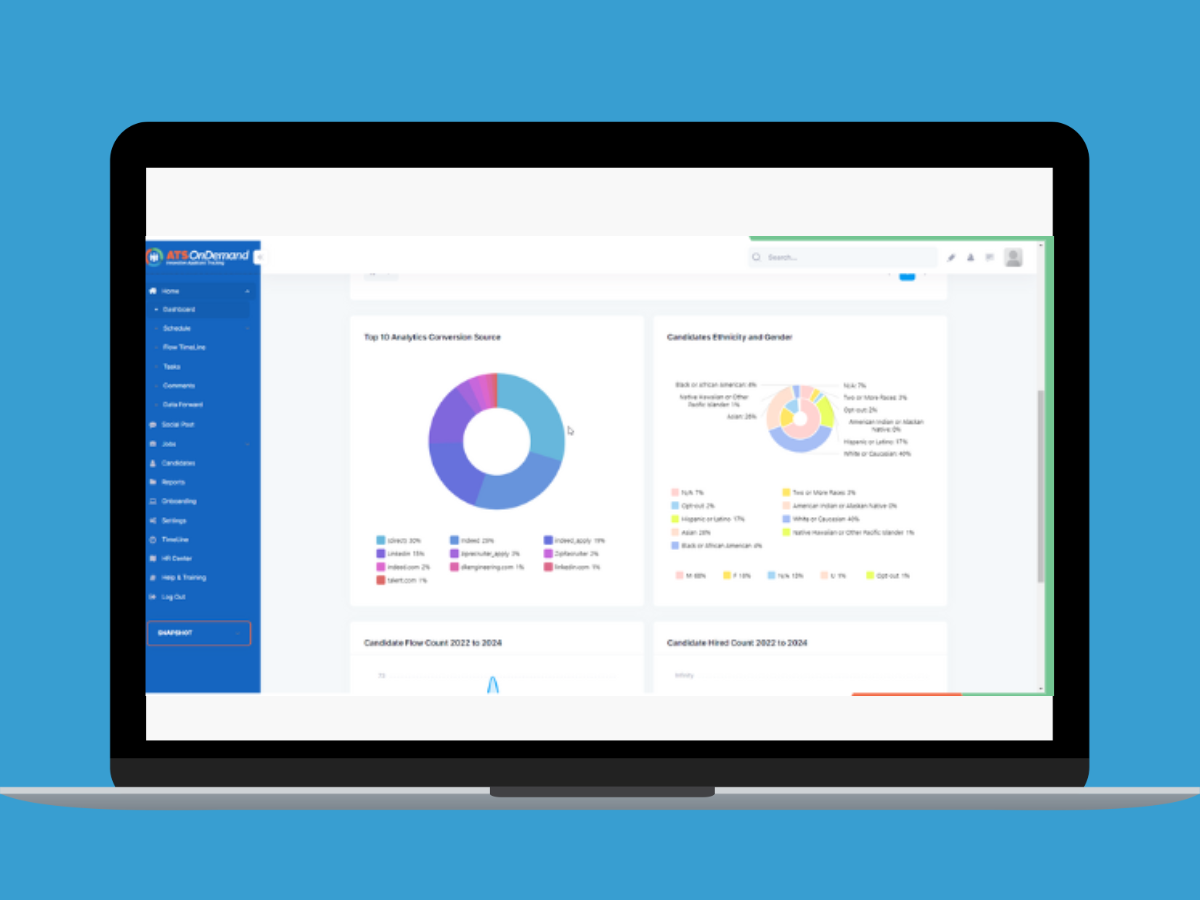As the recruiting landscape continues to evolve, staying ahead of trends and mastering innovative sourcing strategies is more crucial than ever. 2025 brings a new wave of technologies, candidate behaviors, and shifts in talent acquisition. For recruiters, the challenge remains the same—find the right candidates and place them in positions that match their skills, aspirations, and company culture. To boost your placement rates and stay competitive, here are the top sourcing strategies you need to consider in 2025.
1. Leveraging AI and Automation to Enhance Sourcing Efficiency
Artificial intelligence (AI) continues to transform recruiting, especially in candidate sourcing. AI tools can help recruiters quickly sift through vast pools of resumes, identify high-potential candidates, and even predict candidate success based on historical data. By automating repetitive tasks like resume screening, job matching, and initial candidate outreach, recruiters can focus their energy on more strategic efforts like relationship building and in-depth candidate evaluation.
2. Engage with Passive Candidates via Social Media and Niche Networks
Passive candidates—those not actively seeking new opportunities—represent a rich untapped pool. In 2025, recruiters must move beyond traditional job boards and engage with candidates where they spend their time: social media platforms and niche professional networks.Engaging with passive candidates requires a more subtle approach: posting valuable content, joining industry-specific groups, and interacting with candidates’ posts.
3. Incorporating Video Recruiting to Create Stronger Connections
Video recruiting isn’t new, but in 2025, it’s becoming a must-have for any recruiter looking to boost placement rates. Video interviews, employer branding videos, and even video job descriptions allow recruiters to make a more authentic connection with candidates. Not only does this provide candidates with a clearer understanding of a company’s culture, but it also allows recruiters to assess non-verbal cues in interviews—helping to evaluate cultural fit and communication skills more accurately.
4. Nurture Candidate Relationships with Talent Pools and CRM Systems
Building long-term relationships with candidates is more important than ever. A strong candidate relationship management (CRM) system will allow recruiters to keep track of valuable passive candidates and past applicants, making it easier to nurture them until the right job opportunity arises. Instead of just filling immediate needs, recruiters can build deep talent pools that cater to future hiring requirements.
5. Adopt an Inclusive Sourcing Strategy
Diversity and inclusion (D&I) initiatives are no longer optional; they’re essential for the success of any recruitment strategy. By 2025, sourcing for diversity will be an ingrained part of every recruitment plan. Recruiters should be proactively identifying diverse talent in underrepresented groups and ensuring that their job descriptions, employer brand, and candidate experience reflect a commitment to inclusivity.
6. Utilize Employee Referrals More Effectively
Employee referral programs have always been one of the most effective ways to find top talent—and this is especially true in 2025. A well-structured referral program can create a consistent flow of high-quality candidates, as employees tend to refer to individuals who fit the culture and understand the job’s requirements. However, modern referral programs go beyond simply incentivizing employees to make referrals—they should focus on engagement, recognition, and clear communication.
7. Refine Your Candidate Screening with Behavioral Assessments
Beyond just reviewing resumes and conducting interviews, recruiters in 2025 are increasingly using behavioral assessments to get a more holistic view of candidates. Tools like Pymetrics or HireVue offer gamified assessments that measure cognitive and emotional traits, enabling recruiters to predict how candidates will perform in specific roles.
8. Offer Flexible and Hybrid Work Opportunities
The future of work is increasingly remote and hybrid, and candidates are actively seeking flexibility. Offering remote or hybrid positions isn’t just a nice perk—it’s often a necessity to attract top talent, especially in industries like tech, marketing, and customer support. In 2025, recruiters need to ensure they communicate the flexibility of the role upfront and be prepared to onboard candidates in virtual environments.
9. Optimize for Mobile Recruiting
More job seekers are searching and applying for jobs via their mobile devices than ever before. Optimizing your recruiting strategy for mobile is essential to reaching a larger pool of candidates. A mobile-optimized careers site, job application process, and even mobile-friendly interviews can significantly improve engagement and reduce drop-off rates.
10. Collaborate with Freelancers and Gig Workers
The gig economy is only growing, and many candidates now prefer flexible freelance or contract roles over traditional full-time positions. As a recruiter, it’s essential to adapt by sourcing freelance or gig workers for certain roles, offering more agile talent solutions to your clients.
Our Takeaway
The recruitment industry is always evolving, and recruiters in 2025 need to stay agile and open to new sourcing strategies to boost their placement rates. Whether through AI, social media engagement, or inclusive hiring practices, there are endless ways to improve your sourcing tactics and attract top-tier talent. By leveraging the right technologies, embracing flexibility, and nurturing long-term candidate relationships, recruiters will not only succeed but thrive in this new era of talent acquisition.




